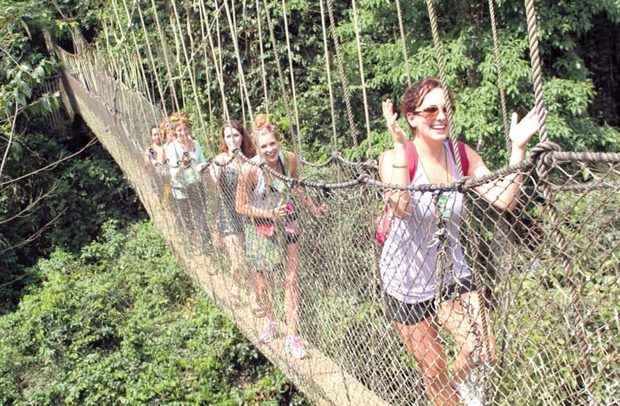Some visitors using the Bunso Arboretum canopy walkway
It must excite you to know that Ghana is a nature lover’s delight. Its sunny equatorial climate and fertile well-watered soils sustain an enchanting selection of wildlife, ranging from elephants to monkeys and marine turtles to crocodiles, as well as hundreds of colourful birds and butterfly species.
More than five per cent of the country’s surface area has been accorded official protection across 16 national parks and lower-profile conservation areas. For travellers looking to experience nature in a sustainable way, Ghana offers abundance of pristine parks and reserves that can be enjoyed by everyone.
A couple of weeks ago, NEWS-ONE brought to travellers some of Ghana’s eco-tourism destinations that offer something for everyone. This week, the paper is continuing with other eco-tourism destinations travellers must visit as part of their adventure in Ghana.
This is part of an initiative by the office of the Ministry of Tourism Arts & Culture to guide tourists to the best destinations in Ghana.
Owabi Wildlife Sanctuary
Located in Kumasi in the Ashanti Region of Ghana, Owabi is an hour and half journey from Kejetia to a village called Esaase. Then it is a straightforward ten-minute walk to the gates where one will have to pay something to enter. It is the home to many butterflies, over 140 species of birds, monkeys and the more reclusive bushpig, bushbuck and antelope.
Owabi can best be described as a secondary forest surrounding a large water reservoir. It is a tranquil site with a great variety of birdlife and fascinating forest walks. It an ideal place for winter migratory birds and hundreds of Mona monkeys. Visit Owabi for an interesting adventure.
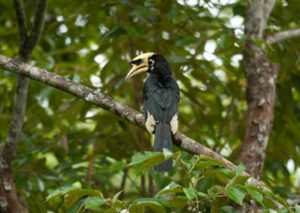
Wechiau Hippo Sanctuary
The Wechiau Hippo Sanctuary, a community protected area, is located at the extreme north-western corner of the Upper West Region of Ghana. It consists of a 40-kilometre stretch down the length of the Black Volta River which forms the region’s western boundary with Burkina Faso. It is home to hippos, bats, chameleons, hedgehogs and many different types of lizards and snakes. The sanctuary is an excellent place to see birds with over 200 species identified and new sights seen regularly. The sanctuary contains much more than just hippos. It is an excellent spot for bird watching, including woodland savannah, riverine and forest shore bird species. Trek through the many hiking trails, searching for monitor lizards, bats, hedgehogs, pythons, and even chameleons. Two local-styled tourist lodges are at the heart of the Lobi communities and offer many opportunities to meet local people.
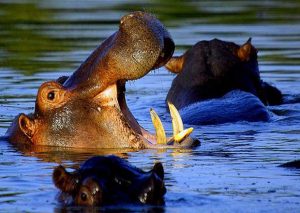
Gbele Resource Reserve
Gbele Resource Reserve lies partly in the areas of Wa (regional capital), Nadowli and Tumu (district capital). The reserve is 61km away from Tumu and 89km away from Wa. Vegetation is that of open savannah woodland. Gbele is proud to be associated with faunas such as roan antelope, waterbuck, hartebeest, bushbuck, savannah duikers, baboons, patas monkey, green monkey and more. The main tourist activities are game viewing, bird watching and nature walk/hiking. Other interesting features include rock outcrops. While out of the park, one may visit the slave defence wall at Gwollu (30km), fishing activities. Interesting communities near Gbele that you must visit include Gwollu, where there are slave defence walls, the tomb of the late President Hilla Limann, the Gwollu palace and libido-restoration clinic. There is also a traditional bone-setting clinic at Gwollu. You may also visit the slave market and museum.
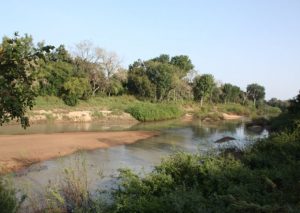
Bomfobiri Wildlife Sanctuary
This is found in the Kumawu Traditional Area in the Ashanti Region, 67km north-east of Kumasi, the regional capital. Bomfobiri is one of the national parks which has a unique varied ecosystem and ecological values in Ghana.
This forest has assorted flora and fauna which include at least 140 birds, 26 species of mammals, three species of crocodiles and five species of primates, all of which will present to you a unique natural experience. Visit to partake in popular activities like bird watching, trail hiking or nature walk and camping.
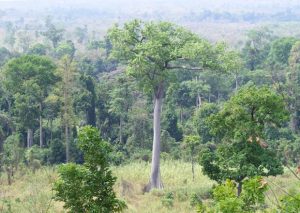
Kyabobo National Park
Kyabobo National Park is located in the Nkwanta district of the Northern Volta Region. This park which covers an area of 359.8 km² is found in the dry semi-deciduous forest zone and has both forest and savanna species of plants and animals. Its forests contain the nationally endangered endemic tree, Talbotiella gendtii.
Animals common to the park include buffalo, kob, warthog, aardvark and baboon. Threatened species of animals, which with adequate protection may recover, include lion, elephant, bongo, reedbuck and hartebeest, which may recolonise the park from the adjacent Fazao National Park in Togo.
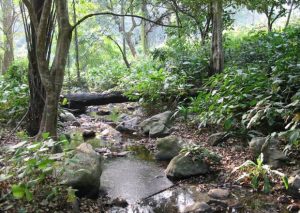
Digya National Park
The Digya National Park was gazetted in 1971 and covers an area of 3,478 km2 of undulating terrain with sandstone inselbergs. It is situated on the western shores of the Volta Lake. Guinea savanna woodland predominates with gallery forest along the major lines. The park supports at least six primate species, including black and white colobus, elephants and a variety of antelopes. Manatee and clawless otter are also reported to be present in the park.

Bia National Park & Resource Reserve/Biosphere Reserve
The Bia National Park and Bia Resource Reserve is located in the Western Region of Ghana. It constitutes a twin conservation area. It is found in the transitional zone between moist-evergreen and moist semi-deciduous forest types. It covers a total area of 305.62km² of the original national park, which was later divided into 277.92km². Bia Resource Reserve and the other 77.7km² represent the national park. It is the only the biosphere reserve in the country.
Sixty-two species of mammals have been recorded. These include 10 primates amongst which are the black and white colobus, the oilve colobus, red colobus monkeys and chimpanzees. The forest elephant and the highly threatened bongo are present. Over 160 species of birds have been recorded; they include the internationally endangered white-breasted guinea fowl.
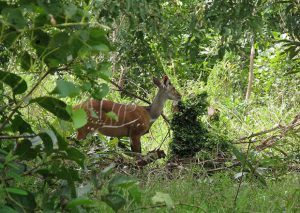
Bunso Arboretum
The Bunso Arboretum is a protected botanical garden and forest reserve, spanning 16.5 hectares. It is located at Bunso in the East Akim District of the Eastern Region. Half of this area is semi-deciduous forest while the other half is made up of indigenous trees, along with fruits, nuts and timber tree species which have been introduced to Ghana by the Plant Genetic Resources Centre of Bunso. The arboretum is home to over 110 species of birds, some of which are very rare. The protected arboretum offers them a peaceful place to call home.
The herb garden which is located in the arboretum contains 100 different species of herbs with a wide range of uses, from food to medicinal to aromatic. Visitors can stroll through the many kilometres of nature trails in the arboretum. Guests can identify the local trees and plants along the way and learn about all the local uses for diverse tree and plant life in the arboretum. Trees and plants play a very big role in life in Ghana, both for food and medicinal purposes. Come see all the arboretum has to offer and learn why it is so important to conserve this precious resource

Boabeng-Fiema Monkey Sanctuary
Boaben-Fiema Monkey Sanctuary is a community-based sanctuary located at Boaben and Fiema, a twin community in the Nkoranza District of Brong-Ahafo Region. The sanctuary protects the headwaters of the streams that are consumed in the locality. It has a good number of the black and white colobus, Mona, spot-nosed monkeys and a variety of birds. The monkeys in the reserve are regarded as the children of the gods of the community; therefore, they are neither hunted nor killed. A system of traditional taboos and their community enforcement protected the monkeys for generations. Make it a point to visit most of these destinations.



